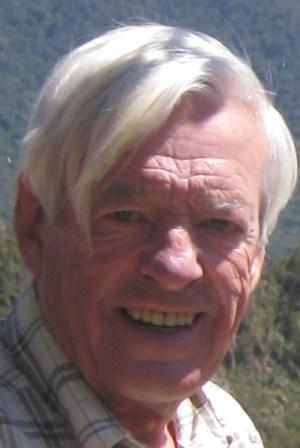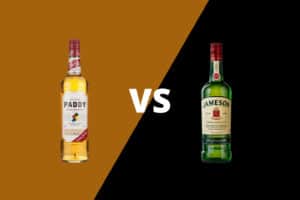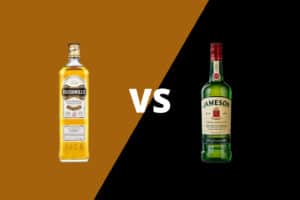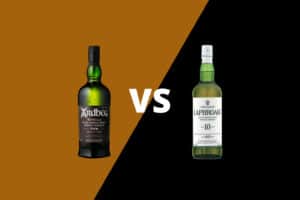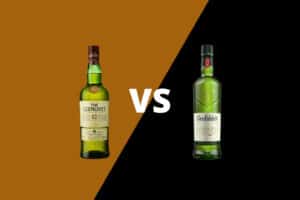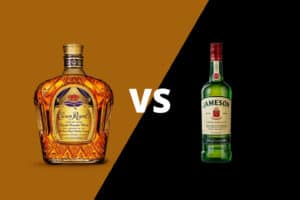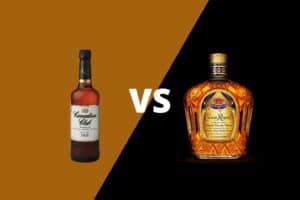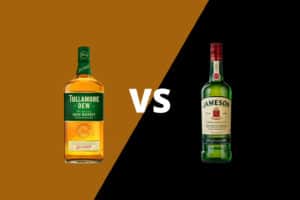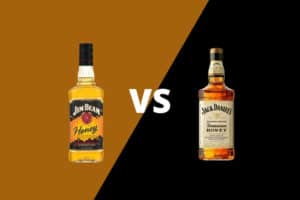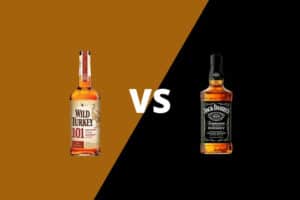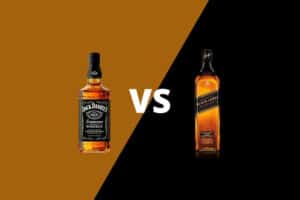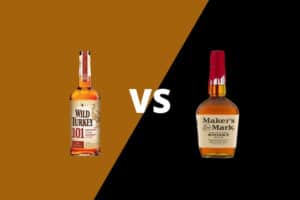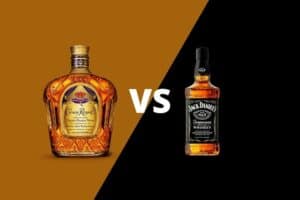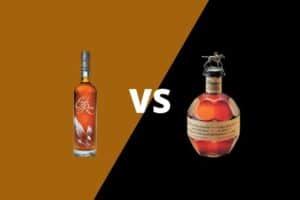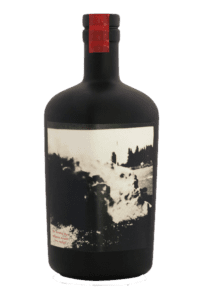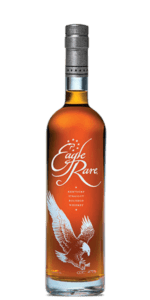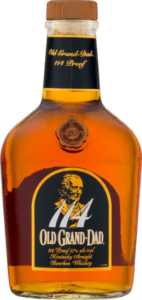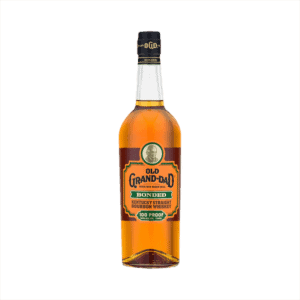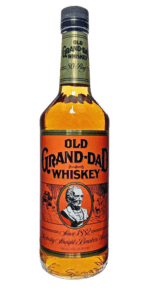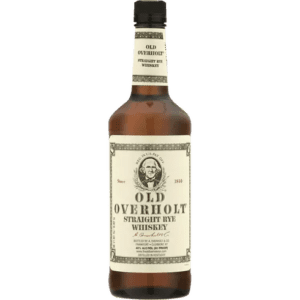Table of Contents
This Week
Lunch may not be the same thing as journalism but to many of us, including this writer, there was a time when the two were almost inextricably linked.
It’s therefore a delight to welcome, as the latest addition to the Ranters menu of journalism-related books and as a second course by Keith Waterhouse, The Theory And Practice Of Lunch.
With Waterhouse on Newspaper Style, published last week, we now have his own two favourite books from his considerable literary output on our list.
It’s out today, and available from the Book Depository (with free postage, worldwide) or from amazon or Waterstones, and in the US from Barnes & Noble, or on order from any half-decent bookshop anywhere.
All those hairshirts out there may be surprised to learn that Waterhouse – who famously listed ‘Lunch’ as his sole hobby in Who’s Who – advised keeping aperitifs down to two, bottles to probably one each, and opting for dry white rather than red, ‘instead of calling up the second bottle of Cote de Beaune and an hour later falling asleep at one’s desk.’
Luncher extraordinaire Ian Skidmore, who doesn’t need advice about drinking, reviews the book for us, below.
And while on that subject (drinking, not books) Bill Greaves – he who gave us Greaves Rules in our issue of May 21 – explains his fascination with the British pub. Highly appropriate, for a website that styles itself The Last Pub On The Street (and possibly also an education for a generation that wouldn’t recognise a pub even if it shut its doors at 3pm).
Finally, friends of John Varley, starting with Leo White, pay tribute to another old pro who has been elevated to the Great Newsroom.
John Varley’s funeral is today (Friday, September 10) at the parish church in Ledsham, near Garforth, at noon.
#
Let’s do lunch
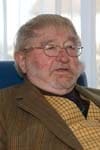
When I die I hope to spend eternity in some celestial dining room in a culinary Valhalla where flights of angels will guide me to restaurants with ever-changing menus. It was never the galleries and concert halls that lured me to a strange city. It was the restaurants. In Vienna, Sachers; in Amsterdam, The Five Flies; in Paris, Allards; in Bruges, The Golden Basket.
Now, like the Earl of Rochester, I have been driven from the pleasing billows of debauch onto the dull shores of lazy temperance and am permitted to dine out only in books.
The philosopher Roger Scruton writes about wine in a way that one feels it on the palate. The immortal Cassandra is to omelettes what Wordsworth was to daffodils. Stay Me With Flagons, by Rabelaisian Irish barrister and bon viveur Maurice Healey, is a rollicking read. Bernard De Volvo’s The Hour is the driver’s manual of the dry martini. But favourite among my banquet of books is Keith Waterhouse’s seminal work The Theory and Practice of Lunch, which I am now delighted to see reprinted. It is more than a book: it is the key to a way of a happy life. No one ever put anything better than Waterhouse.
Let him explain his purpose:
I know of only one pleasure of the flesh more acceptable than lunch – and lunch is so perfect a curtain-raiser to it that they make a classic double bill. But it is exclusively in praise of the supporting attraction that I am here to sing… It is the institution of lunch itself, over and above its edible parts, that I find so very agreeable.
His perfect lunch was at ‘the vine hung terrace of Locandra Cipriani, the famous trattoria on the island of Torcello…’
I have always mourned the fact that I have shared a poker table with Waterhouse but never a lunch table. Now I learn with deep sadness that I have shared a restaurant, but at different times.
His contents page is a degree curriculum in the Luncheon Art. ‘What Lunch Is’, ‘What lunch is not’, ‘Duties of a lunch companion’, ‘Bad Companions’, ‘The care and training of waiters’…
‘Lunch,’ he wisely opines, ‘being an absolute. In its perfect state it is incapable of anything but the most superficial of changes or improvement… it is a prime example of that, which if it did not exist it would be necessary to invent… lunch is a celebration like Easter after winter. It is a conspiracy. It is holiday. It is euphoria made tangible… Lunch, as opposed to dinner, is where you can invite a charming lady without her boring husband, or a fascinating man without his boring wife. Dinner is an obligation or even a retaliation. Lunch is free will.‘
The chapter on what luncheon is not will bring many a glad cry from dedicated lunchers.
It is not a meal partaken for nourishment. It is not prawn cocktail, steak and Black Forest gateau with your accountant or bank manager.
It is not literary, civic, commemorative, award presentation, annual office, or funeral. It is not when either party is on a diet, on the wagon or in a hurry. Despite Stephen Sondheim’s toast to the Ladies Who Lunch, it is not going Dutch. It is not what Foodies do when they go out in the midday sun. It is not taken perched on stools at a ledge. Deli food is delicious but it is not lunch.
It is not, as a rule business
Ever the thoughtful host Waterhouse lists useful phrases:
‘Why don’t we start the proceedings with a nice glass of champagne?’
‘You’re not in any great hurry to get back, are you?’
‘Could my guest have a packet of Benson and Hedges, please?’
‘Let’s have the other half while we look at the menu.’
‘You may have whatever you wish, my love.’
‘Could I have my chips on a side plate, please, so that my guest can dip into them?’
‘Taste this – it’s delicious.’
‘Mmmm – yours is good too.’
‘Do you think we could manage another bottle?’
There is no component of the glory that is a companionable lunch that misses the benevolent Waterhouse eye.
By the coffee stage, tablecloths are supposed to look the worse for wear. If the cloth does not look as lived in as Spencer Tracy’s face, then the lunch has been a failure. It should bear the honourable scars of battle – wine stains, soup stains, olive oil stains, spilled coffee, cigar burns – and be strewn with campaign debris in the way of bread crumbs, spilled salt, wine corks, toothpicks, sugar cubes, chocolate mint wrappers, cigarette packets and what have you. The waiter who obliterates this impressive detritus is as a vandal wrecking the Albert Memorial.
As an aperitif, I am a three-martini man, made to a recipe that originated in the New York Mafia and brought home by Brian Hitchen. Waterhouse has bent his mighty brain to this important curtain-raiser. Alas he comes out strongly against more than two aperitifs, saying with justice that four aperitifs constitute a drinking session.
My own favourite opener is a vodka martini, if it’s so well constructed that it leaves me stirred not shaken. A properly-prepared Bloody Mary, with ‘all the works’ as barmen are fond of designating their arsenal of Tabasco etc, is alternatively a perfect curtain-raiser to lunch. A strong Bloody Mary, in the course of blowing one’s head off, clears the sinuses, activates the palate and generally tones up the system, thus fostering the complacent delusion that you are taking something breakfastly wholesome like bran flakes.
Otherwise, what you will, with tonic or soda – and lemons.
Lemons bring the Mediterranean to the table. The absence of lemons brings a touch of the Irish Sea.
I could go on stealing his phrases for hours, but enough. Pausing only to regret that our age is unique in history in that the old get their ideas from the young so that a generation exists to whom wise words mean nothing. An age of LSDTs – money, drugs and hallucinations.
We gourmands were better served in the nineteenth century by a North country squire who invented Mr Jorrocks, a foxhunting cockney grocer with a giant appetite whose cri de coeur was ‘Pick me up, tie me to my chair and fill up my glass.’
I hope when I am ushered into that celestial dining room I will find Waterhouse has bagged the best table for us. I wish Mr Jorrocks and all right thinking lunchers, ‘Bon appetit!’
#
Pub talk

For a lifelong devotee of the British Pub it was indeed a defining moment.
OK, so it was 11 in the morning. Even devotees of British pubs don’t usually start boozing at 11 in the morning. But back home in London, on the other side of the world, it was 4am. And 4am in London was my personal clocking-off time.
The very last tickles to the front page had been well and truly tickled and for an ageing scribbler on assignment in Hong Kong it was time to enjoy a few hours’ well-earned sleep.
As weary footsteps made their way back to featureless international hotel, the sign on the building on the pavement alongside shone like a beacon of hope in the late morning sunshine. The Pickled Pelican. Oh, my word! And on special offer – Tetley’s Bitter on draught. In the corner of what could almost be described as a snug, BBC TV offered Auntie’s latest news in reassuringly Queen-like English. And the sign on the wall bore the kind of idiotic philosophy regularly imparted to the drinking classes: ‘BEER IS THE ANSWER – BUT CAN ANYONE REMEMBER THE QUESTION?’
This was new China, complete with towering skyscrapers, neon lights, strange hieroglyphics, strangulated vowels and scurrying feet, but what self-respecting Brit could pass an establishment that called itself The Pickled Pelican?
In truth, I’ve never heard of a British pub called The Pickled Pelican. But who can deny that The Pickled Pelican sounds like a British pub? I mean, it doesn’t suggest a delicatessen, does it? Or even a fish and chippie. Or a pet shop. It sounds like a boozer.
So there I was, ensconced in the news pages of the South China Morning Post with foaming pint in hand, when an unexpected voice interrupted my desultory researches.
‘Do you know, Bill, I might join you in one of those.’
Looking up, I found myself face to familiar face with ace newshound and enthusiastic amateur wicketkeeper Nick Bryant, the BBC’s man in Australia and former Daily Mail colleague in London, who just happened to be en route with new wife, Fleur, from their wedding in Sri Lanka to his home in Sydney.
Unexpectedly astray in a foreign land, he, too, had found the call of The Pickled Pelican irresistible and in no time we were catching up on each other’s life and times.
It took several more pints – served in proper dimpled glasses, needless to say, complete with handles – to carry out this exchange of information for the simple reason that we had not clapped eyes on each other for fourteen years.
All of which goes to prove, if any such proof be necessary, that the British pub is unique. It flutters its come-hither eyelids and the faithful, wherever they find themselves, come running to its bosom.
Like this particular hostelry, attempts to recreate it have been made all over the world.
Nostalgic expats, homesick tourists and workers on an international errand – myself included – have sought comfort in the Queen Victoria in Florence, the Duke of Wellington in Beirut, the Britannia in Monte Carlo, the Crown, in Cusco, Peru, the Cock Tavern in Las Palmas, the British Grenadier in Vienna, the Winston Churchill in Paris, the Old Bell in Amsterdam, the Red Lion in Bimini, Bahamas, the Lord’s Pub, would you believe, in Garmisch-Partenkirchen – even The Pub, plain and simple, in Valletta, Malta.
But these establishments remain today what they always were, incongruous idiosyncrasies in a foreign field, frequented only by Brits on their travels – such as Nick Bryant and myself – and the odd native anglophile.
So before we embark upon a personal tribute to a priceless national institution, perhaps we should define the nature of the beast. What exactly are the ingredients that distinguish the British Pub from all those other oases of refreshment throughout the rest of the thirsty world?
One obvious difference is the very one so spectacularly exemplified by that chance meeting with an old buddy. Unlike bars and other mere drinking places, pubs are not where folk arrange to meet but places where the like-minded happen to congregate, like Mallory and Irving on Mount Everest all those years ago, for no better reason than because they are there.
As with church or bus-stop, the pub summons to its presence those who know instinctively when and where to assemble. No phone calls, no emails – just an irresistible magnetic force that grabs the faithful by the scruff of the neck and marches their unresisting footsteps towards an immediate and predetermined destiny.
But other differences are equally significant.
First and foremost, the pub is someone’s home. It is a haven of welcome, occupied by a resident landlord – respectfully acknowledged to be ‘the guv’nor’ – or landlady or, more often, both, whose generous predisposition is to preside over asylum for friends, neighbours, and passers-by. It is not a bar – it is a public house.
Back where it really belongs, in a British village, town or city, as opposed to Hong Kong, Sidi Barrani or wherever, the pub, makes no attempt to advertise its raison d’être. If folk doesn’t know what they are looking for or how to recognise it when they stumble across it, they must expect to remain unfulfilled.
Its name offers no clue – a bit of regal anatomy, perhaps, like Queen’s Head or King’s Arms, whole members of the animal kingdom such as Hare and Hounds, Golden Bear, Dog & Duck, Black Bull or Red Lion or perhaps some local sporting activity like The Cricketers or The Anglers’ Rest seldom means to imply that king, queen, hare, hound, bear, bull, lion or men in white flannels or chest waders are awaiting inside to greet the visitor, although friendly dogs – but seldom ducks – may lurk beneath tables, munching their way through packets of cheese and onion crisps.
Nor do its street windows give anything away either. However large, they are usually constructed of opaque glass or, in the case of many rustic establishments, bottle glass full of circular swirls. Either way, they totally obscure the nature and the occupants of the rooms within. The fact that you are enjoying a few pints with your chums does not require you to be visible to spouse, employer, parents, children, lover or the law.
By far the most significant characteristics of the British Pub, however, are social and historical rather than structural.
For example, unlike clubs, societies or often even churches, pub patrons are not collected together by colour, creed, language, job description, wealth or stature. When first arriving in a new neighbourhood, the very act of walking into ‘the local’ unequivocally disassociates the customer from any such prejudices. Pubs, by definition, are for the public, in all its shapes and forms.
(A good friend, retired High Court judge and clan chieftain, now resident in the Scottish Highlands, never fails to visit one of his favorite North London pub haunts whenever he returns to the metropolis – The Alma in Newington Green. Once there he is surrounded by familiar folk, some of whom he has defended as a barrister before his elevation and others whom he has subsequently been obliged to send down for periods of custodial reflection. He is seldom allowed to put his hand in his pocket. He is back among friends.)
True, there are ‘posh’ pubs and ‘rough’ pubs but these are only representative of the location and the social standing of the predominant population thereabouts. Any ‘posh’ pub that refuses to serve a customer in donkey jacket and working trousers (save politely asking for muddy shoes to be left outside) and any ‘rough’ pub that shuns the patronage of a chap in dinner suit and lady in gown and elbow-length gloves would not qualify to call itself a pub in the first place. (Posh and rough pubs exist only in urban areas anyway – out in the country the loftiest landowner and humblest serf have long since learnt to depend on each other’s allegiance, both commercially and socially.)
Nor is the pub primarily a place to drink. Bars and hotels serve drink; pubs serve a need for companionship. Pubs can’t be built – they are a way of life.
What they do provide is the social equivalent of the parish notice board, with additional information that would never have passed the vicar’s censorious blue pencil, together with every local service ranging from job centre, through market stall to small ads column. Regulars who set out for a pint or two and return home with five pounds of King Edwards or a couple of fresh-caught mackerel do so because King Edwards or mackerel happen to be what someone else came in with.
On the other hand, pub regulars expected to return home armed with Agatha Jones’ wedding date, for example, or the weight of Belinda’s baby or the time and place of the next car boot sale never fail to disappoint. Such detail seldom springs to light on the pub agenda of acceptable conversation.
Saloon or public bar chat begins with a casually offered snippet – ‘So Chalky’s gaff was broken into again last night…’ and develops along totally haphazard lines, involving many summaries from expert landlord or landlady for the benefit of new arrivals, until Chalky’s misfortune has long since been forgotten but everything else worth knowing has been thoroughly aired.
Because folk do not foregather in the pub by accident or arrangement, at certain times on certain days, or even on certain times of every day, they belong there. They are members of that most resolute and irrepressible breed, the pub regular, whose presence at the bar can be safely predicted by other members.
‘Not seen Fred for a day or two’ is another way of saying ‘Is Fred ill?’ ‘Is Fred dead?’ ‘Is Fred on holiday?’ or ‘Is Fred under house arrest?’ What it does not mean is ‘Has Fred found something else to do?’ or ‘Is Fred coming in at a different time of day?’
Another essential purpose of the pub is the service it provides to everyone and anyone who wants something done. Pub regulars have no need to explore classified ads, Yellow Pages or the internet to find what skill they seek. Any self-respecting establishment should contain its representative builder, plumber, electrician, plasterer, carpenter, curtain putter-upper, carpet fitter, lawyer, vicar, undertaker, computer wizard, butcher, dog groomer, gynaecologist, someone who can spell gynaecologist, French-speaker, citizen’s advice official and skilled letter writer. Surreptitious suppliers of adult toys or cheap fags are a bonus and an insider from the local cop shop something of a luxury. If any of these are temporarily missing, there should be someone who knows where they can be found.
(Only one occupation is usually lacking from the pub clientele. The village general practitioner is generally advised to drink outside the boundaries of his or her practice for fear of being bombarded with symptoms by regulars in search of a privately-owned National Health Service. When living in the small Buckinghamshire township of Chesham, a doctor friend and I would often venture about six miles to The Two Brewers in the charming village of Chipperfield on a Sunday evening so that he might enjoy a few uninterrupted pints. Sometimes we overdid it. Meeting him in the high street one Monday lunchtime after our night before, I enquired how his morning had gone. ‘Terrible,’ he said. ‘There were 27 people in the surgery and not one of them was as ill as I was.’)
But above and beyond all these distinguishing elements lies the one key factor that determines the ultimate point of departure between the British pub and the world’s bar – a distinction that lies in a custom whose origins are buried in the dim and distant past.
In bars you run up a tab. In pubs you pay as you drink. Or rather, one person pays and all other members of the round drink. And who is the one person who pays? In various pubs around the land, the protocol is published for all to see in the form of a yellowing newspaper cutting from the Daily Telegraph.
After half a century of typewriter toil, Greaves’s Rules – the subject matter of that old cutting – are my only eponymous claim to fame and have been recently aired in the Ranters columns. But how they came to be ascribed to me has not been previously publicised.
Some years ago, in the days when newspapers lived in Fleet Street and the round often assumed titanic dimensions, I became aware that standards were falling. Appalling laxities like tossing a coin or engaging in a game of spoof in order to determine who should pay were creeping in to replace the proper order of things. Some players even sank to the unpardonable depths of ‘round avoidance’ – arriving late, enjoying several drinks and then, in the nick of time, spotting someone across the room with whom they ‘must just grab a word’.
A milestone in this decline of standards was arrived at in the early evening of a summer day in the early 1970s.
The scene was the editorial floor of the Daily Mail newspaper, around which was spread a thirsty bunch of day-shift reporters, eagerly gazing at the clock that would liberate them in the direction of the pub, situated at the bottom of the stairs and just round the corner.
But a crisis had emerged.
There was one in our midst who was fast becoming a proven transgressor of one of the most lamentable crimes in the rule book of drinkers’ etiquette.
He stood accused of ducking his round.
It had taken at least twelve months for the evidence to become conclusive. Pub regulars are usually far too determined to ‘stand their corner’ to notice the existence of a confederate who is not playing the same game. But now the facts were incontrovertible.
If he and one other arrived in the pub at the same time, he would insist it was ‘my shout.’ Even if there were three, he would demand to be first to foot the bill. In such circumstances, the outlay was deemed to be a sound investment for a lengthy session at others’ future expense.
Any greater number than three, however, and the wallet would remain firmly out of view while he enjoyed as many as he dares of fellow drinkers’ rounds before making his escape.
Something had to be done about it.
The fateful evening approached. On the pavement outside the public bar of The Harrow, on Whitefriars Street, just off Fleet Street, there happened to be a men’s and ladies’ public lavatory, built of sturdy Victorian brickwork and visible as a blur through the opaque window of the bar.
It took ten minutes to orchestrate the structured, surreptitious evacuation of the office, as groups of two or three sidled out and, according to gender, took their place in the appropriate section of the public lavatory.
As soon as the exodus was complete, I suggested to our suspect that it was high time for a ‘quick bevy’ downstairs.
Predictably, he refused with vehemence my offer to pay for the opening drinks and called up a couple of pints.
A pre-arranged signal through the frosted glass, via a cunningly planted agent who was apparently struggling with an errant umbrella on the pavement, alerted the swelling population of both sections of the public lavatory and between the order and the payment of the opening two drinks, twenty-three cheerful punters arrived through the door in single file to create the biggest one-man round in the chequered history of one of the City of London’s most venerated pubs.
It has to be said that our victim responded with remarkably good grace. A round, once embarked upon, had to embrace all new arrivals until superseded by the next order. He paid up half his weekly salary with a wry smile and never misbehaved again.
News of this barrack-room justice spread like wildfire and, almost overnight, created a formula for determining whose turn it was to pay for the next round of drinks, known throughout the murky world of Fleet Street as Greaves’s Rules.
The very need for the existence of those rules is the justification for an occasional glance at the life and times of one of the most enduring pillars of national social history.
#
The man with the golden eye
By Leo White
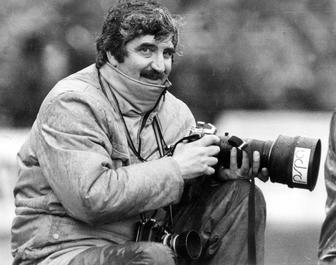
Each morning he thrilled to see it published. Especially, that world-renowned picture of Bobby Moore and Pele embracing after Brazil beat England in the World Cup in Mexico in 1970.
He did a special deal with the Mirror to take time off every four years to cover the World Cup and he had travelled to Mexico with his reporter colleague in Leeds Allan Staniforth in a Mirror car specially prepared for the Mexico rally.
Not bad for a Doncaster-born lad who started in the darkroom of the Doncaster Gazette. He later joined Eastmid News Service in the town and had several spectacular pictures in the nationals.
But his biggest triumph came covering floods at Catcliffe, near Rotherham. Every national used his pictures next day, some devoting a page to his work.
Outstanding was a picture of a policeman, waist-deep in floodwater carrying a tiny baby to safety. It was a picture that went round the world and it impressed the Daily Mirror enough to take him on as their Leeds staffman. He never looked back.
He worked in Biafra and Belfast highlighting the suffering of children in those troubled areas.
He was a good man in a journalistic world of heavy language who was heard only in times of stress to utter the words ‘flippin heck’.
He leaves a widow, June, and two sons, Andrew who has a thriving Leeds picture agency, and David, a TV cameraman and producer.
Alastair McQueen writes:
John Varley was one of those photographers who were more than just a little bit special, particularly where young reporters were concerned. As a newly-joined Mirror youngster, there was always comfort in having him with you on a job, particularly on a difficult interview.
Like the London-based Eric Piper he knew instinctively when young reporters were struggling and when to step in to help.
Working with him on a story was always a joy, always an exciting time because Varley was always out to get a show in the paper, no matter how run of the mill the job.
Despite his reputation as one of the best cameramen in the game he always had time for the up and coming youngsters, particularly young photographers. He never forgot the struggles he had as an agency man.
Way back in the early days of the Irish troubles I was in Londonderry with him. Trevor McBride the local freelance was also on a shift for the Mirror. Out we all went to cover some disturbance or other and the Army flooded the place with teargas.
We were all on our hands and knees in a street near the Bogside, choking, weeping and swearing. An armoured personnel carrier had become trapped and the rioters – despite the gas – had managed to force the doors and wedge them open and were trying to kill the soldiers inside with scaffolding poles and other weapons.
Suddenly, out of the blue, two old ladies charged with furled umbrellas and put the rioters to flight. Trevor McBride ‘thought he’d got a couple of pictures.’
But back at the improvised dark room in the City Hotel the streaming eyes were forgotten as Varley looked at McBride’s pictures. They were superb and caught the grannies in full flight. Many a staff man, envious of the shifter’s success, would have tried to wangle a share of the glory – not John Varley. He rang the picture desks in both Manchester and London and did a hard selling job on McBride’s pictures giving him all the credit.
He followed it up later with another call to Alex Winberg, the London picture editor of the Mirror, to ensure McBride got all the credit plus a big byline and was paid more than he would have been on shift rate.
The Mirror Irish edition splashed: Charge Of The Brolly Brigade. The story was big because of the pictures and it made it big in the main editions. The phones in the City Hotel were ringing into meltdown at midnight as the Mirror dropped on other picture desks.
Another time, again in Northern Ireland, I was part of a Mirror team helping produce a special edition. To my delight Varley was part of the team and again he produced another stunning example of that Varley magic.
The word came back that London wanted a symbolic picture. Everyone wracked their brains but the result was next to nothing… until Varley decided he was going to go for a stroll with his camera.
Off he went to Ardoyne, one of the toughest areas of the country, and hit the jackpot.
Only a man with Varley’s genius for a picture could have got it. He spotted a cross entwined with rusting barbed wire atop a church. Simple. We’d all seen it thousands of times, but once Varley’s lens was trained on it that cross, in his words, was ‘the symbol of Northern Ireland’s agony’.
And that was how the Mirror played it. As he proved time and again, the man was in a class of his own.
Derek Jameson writes:
John Varley worked for me when I was picture editor of the Sunday Mirror in the sixties. He was an absolute delight – a great photographer, gentle, charming and courteous, ready to go to any length to get a good picture. In fact, the other photographers reckoned he would crawl through a field of the proverbial to outdo them. How sad that yet another esteemed friend and colleague has passed on.
Ken Lennox writes:
I picked up the phone It was Derek Jameson. ‘How would you like to join a new paper you little Scottish tosser?’ .When I realised I was not being fired I said yes. I moved to Manchester for the birth of what was later to become the Daily Star.The world of the Northern photographers opened up to me.
We had no paper to publish yet, not even a name, but we were put through our paces – covering jobs, attending football matches rushing films back to Rocky Renton, the picture editor. I first met John Varley at Leeds on a Saturday afternoon covering a match. John introduced himself with a big grin on his face. ‘How are you finding it on the secret paper?’ he asked. Not waiting for an answer he went on to propose some of the problems of snapping for this phantom national without a circulation. Within minutes I was surrounded by the Northern mafia of photographers. John had endless ideas about the problems and the joys of my new job and had us all in stitches.
We sat together during the match and he kept up a running commentary on the football, the weather, my new colleagues, and picture editors in general (all wankers, to a man). Over the next few years I saw a lot of Varley. I would look forward to seeing him on a job. He was a ‘good operator’ – the highest accolade you could award to a news photographer. He was also warm, funny and a great storyteller. He had a very distinguished voice and the timing of a comic.
John was also quiet and thoughtful and was often elected to go to a front door to ask for the collect photograph of some victim of tragedy.
I first heard the description from John – ‘Milk bottles… Bloody milk bottles’… His delightful observation on photographers assigned to doorstep duties for days at a time.
In 1993 I took on the job as picture editor of the Sun. One of my first phone calls was from John. ‘Hey Kenny, I thought you believed that all picture editors are wankers…’
I opened the Mirror this morning and read that John Varley had died. The story brought back memories from thirty years ago. John was a part of my life in the North. I will remember him as a good operator, a friend, and a man who knew how to get the best out of life.
###

